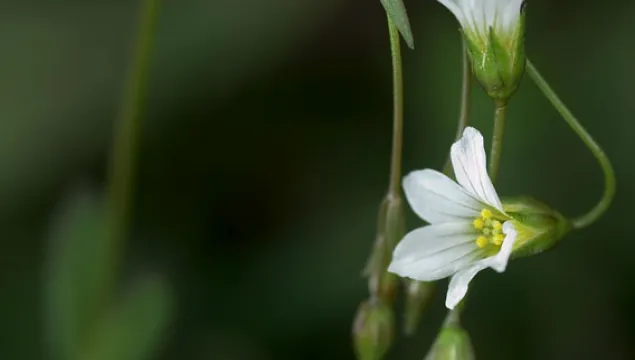Honesty
The papery, translucent, silver 'coins' of Honesty are instantly recognisable. They are actually the leftover seed pods that dangle from the plant through winter.
The papery, translucent, silver 'coins' of Honesty are instantly recognisable. They are actually the leftover seed pods that dangle from the plant through winter.
A sure sign that spring has arrived, the Cuckooflower blooms from April. Look out for its delicate, pale pink flowers in damp meadows and ditches, and on riverbanks.
The dark-blue flowers of Common milkwort pepper our grasslands from May to September. It can also appear in pink and white forms.

A small and delicate plant of chalk grasslands, Fairy flax can be seen in bloom from May to September - look out for its nodding, white flowers.
The bill-shaped seed pods of Common Stork's-bill explode when ripe, sending the seeds flying! This low-growing plant has pretty pink flowers and can be seen on grasslands and coastal sands.
Meadow crane's-bill has striking violet flowers that pepper hay meadows, verges and grasslands with colour in summer. It is also a popular choice for gardeners and attracts a wide variety of bees.
Bloody crane's-bill has striking magenta flowers that pepper our rare limestone pavements, grasslands and sand dunes with summer colour. It is a favourite of all kinds of insects, including bumblebees.
Herb-robert is a low-growing plant, with small, pretty, pink flowers. Look for it in shady spots in woodland, hedgerows and coastal areas.
A delicate, small plant of woodlands and hedgerows, wood-sorrel has distinctive, trefoil leaves and white flowers with purple veins; both fold up at night.
As its name suggests, Himalayan balsam is from the Himalayas and was introduced here in 1839. It now an invasive weed of riverbanks and ditches, where it prevents native species from growing.
The small, yellow flowers and woolly appearance of kidney vetch make this plant easy to spot. Look for it growing low to the ground on sand dunes, chalk grasslands and cliffs in summer.
Look for the small, pink, pea-shaped flowers of Common restharrow on chalk and limestone grasslands, and in coastal areas, during summer.